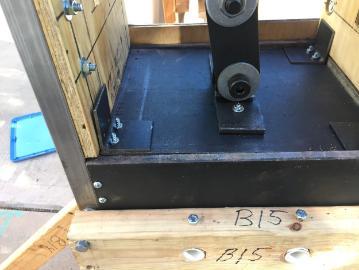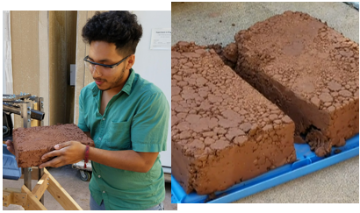“Completion” of the senior design project may not mean the same thing across all projects and all engineering disciplines. However, for the most part, the senior design project is considered complete when you and your team are able to have iterated upon your conceptual design to be able to produce and refine a testable prototype of the design. If the design has had enough revision and testing, this can also mean that the prototype may be implemented with the customer or target community that it was intended for.
Implementation, however, carries with it the responsibility that you and your team must have done the work to ensure that a robust, safe, and effective product is being delivered to your customer or target community. More than giving “each person his or her due”, ensuring that your team puts forth the utmost effort to complete the senior design project is honoring your customer’s justified claim, or right, to a safe and effective product (Velasquez, Andre, Shanks, & Meyer, 1990) [1]. Moreover, design analysis and validation before final implementation calls upon engineering virtues of reliability, honesty, and compassion to place the customer before all else at the outcome of the design process (Velasquez et. al, 1990) [2].
Even at the end of the design process, several ethical considerations must be employed carefully to ensure that each design solution will be implemented only when engineering designers are confident that the design will operate safely and effectively for the customer or target community. If design implementation occurs without these considerations, it not only puts the success of the product at risk, but also may produce harms that could have been avoided with more careful thinking. Ensuring that you and your team are doing the work necessary to prepare the design for deployment is upholding fairness in the engineering profession, giving the people you are helping the products they deserve.
Considerations regarding Fairness and Justice in the deployment and implementation of the senior design project are:
Completion:
- Simply put, if your prototype is not able to safely achieve the functionalities expected by your customer, it should not be deployed. Prematurely sending out your design to your customer or target community for the sake of saying it has been done is neither professional nor fair to the people who seek to experience the benefits of your design solution.
Extent of testing:
- In order for a product to be considered ready for implementation, engineers must be confident that their prototype not only meets consumer-defined design specifications, but that it also does so efficiently and safely. Your team should conduct extensive testing to ensure that the best possible product makes its way to your customers. If not enough data is collected to verify that the design is safe and effective for your customers, your team should not deploy the prototype until enough tests are completed.
Customer feedback and concerns:
- It would be unfair for your customer or target community if you were to deploy your design without at first collecting customer feedback regarding your design. Giving people adequate time to voice their concerns and suggestions on your design solution does treat them fairly, and will improve the intrinsic value of your design.
Cost:
- Cost can get in the way of your design solution being effectively deployed and implemented. If the cost of purchasing, transporting, and maintaining your design is not a reasonable expense for your customer, it is highly possible that your customer base may choose not to adopt your design after all. Iterative design with cost in mind can allow your team to better meet customer needs and expectations of your team’s design solution.
Personal Link
Unfortunately, at the end of our senior year my team and I were unable to deploy our prototype for a manual clay brick press to Nicaragua as originally intended. We were able to complete and assemble a standing prototype that was tested a handful of times before and after the Senior Design Conference. Our tests, however, made it abundantly clear that our current design had too many issues to be considered complete. Several subsystem interactions were too cumbersome and required the user to have to manually reorient several components during operation in order for clay compression to occur evenly. One of these key interactions was an interface between our clay compression chamber and the compression plate (Figure 1). We designed for the compression plate to come in and out of the compression chamber with the descent of a compound lever arm system that was controlled by the operator. When we assembled our prototype, however, we saw that the compression plate would not always descend into the compression chamber, and sometimes it would come into contact with the chamber walls during compression. This made it so that if the plate was not manually reoriented, the clay would not be evenly compressed by the device.

Figure 1: Interaction between the clay compression chamber and compression plate of the Frugal Clay Press for Nicaragua prototype.
One more significant issue with our design that prevented us from deployment at the end of our senior year was that the device did not achieve adequate clay compression. The press was designed to allow for ¾ of an inch of compression for the clay inside the chamber. While our tests showed that this stroke length was achieved by the press, the bricks that were produced by the device were not compressed enough. Upon being retrieved from the compression chamber, the bricks did come out in the desired shape but could easily be deformed if carried out of the chamber too quickly (Figure 2). Because bricks were not consistently pressed thoroughly and evenly by the press to allow for bricks to retain their shape after retrieval from the compression chamber, our team decided that the prototype should not be deployed to Nicaragua without further iteration from a future design team.

Figure 2: Compressed clay brick immediately after retrieval and upon being laid down to dry. Notice that the edges of the bricks crumbled quickly after being carefully placed down, showing that these bricks were not compressed enough by our prototype.
References:
[1] Velasquez, Manuel, et al. “Rights.” Markkula Center for Applied Ethics, Markkula Center for Applied Ethics, 8 Aug. 2014.
[2] Velasquez, Manuel, et al. “A Framework for Ethical Decision Making.” Markkula Center for Applied Ethics, Markkula Center for Applied Ethics, 1 Aug. 2015.
